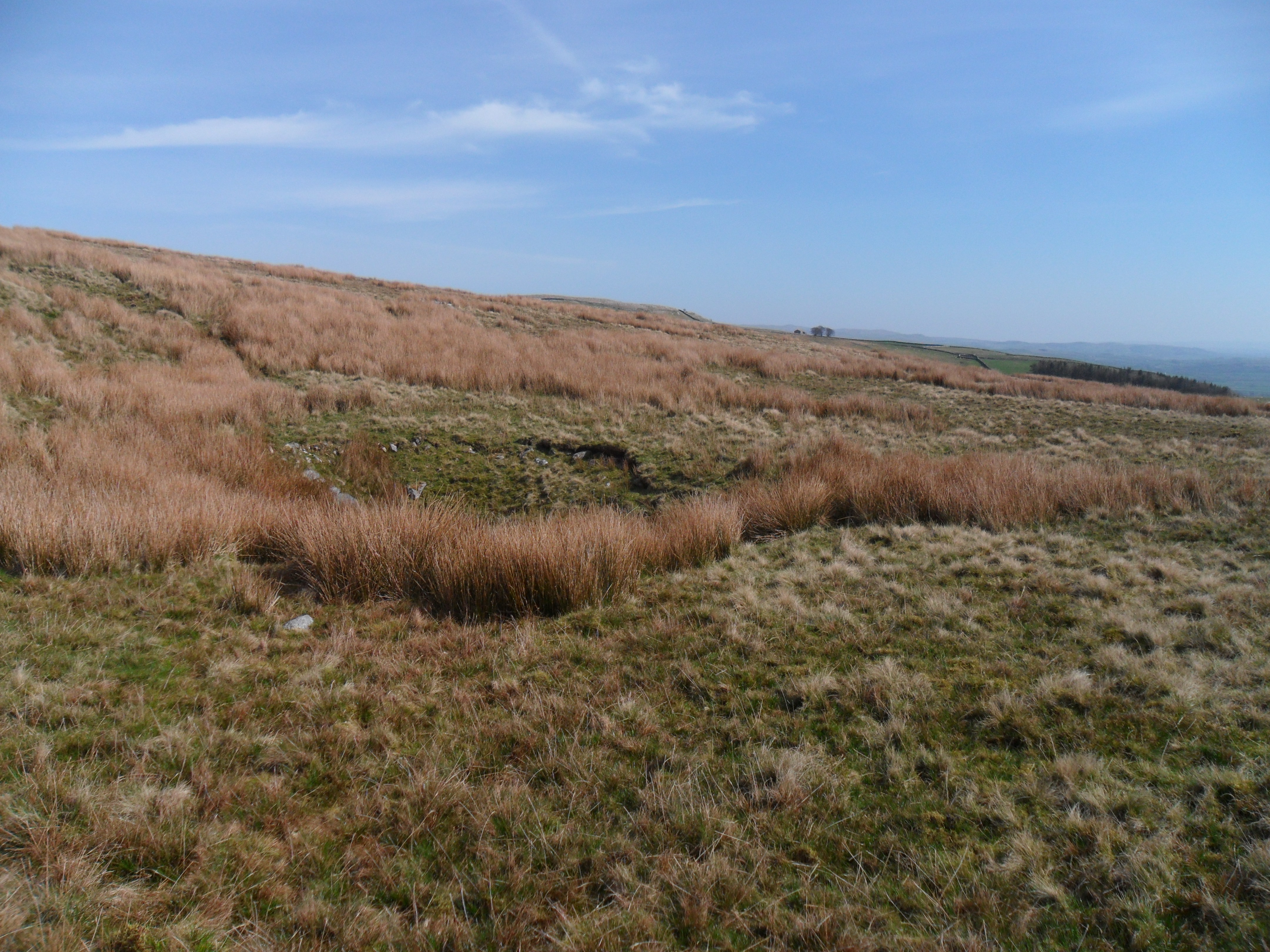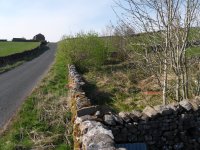Just to return to this topic, which we discussed at length during the very worst of the coronavirus restrictions - David Johnson has made two trips recently, to investigate the irrigation / drainage aspects associated with Grey Wife Sike. He's prepared the notes below, which I've reproduced here in their entirety. Cavers with no great interest in this topic in general may find item 5 worthy of consideration however.
I'd like to thank David for his time, effort and attention to detail on this one.
...
Field notes, Grey Wife Sike, 13 June 2020
1. the stream from Knoutberry Hole (SD73779 72960) to the shakehole at SD73708 72275 is a natural feature.
2. the manmade channel leaves the stream at SD73711 72325 at 457m AOD (image 81, looking south).
3. water flows within the channel up to SD73700 72333 (457m AOD).
4. it is joined by a modern grip at SD73688 72290 so the channel becomes wider and deeper than hitherto.
5. the line of the channel is cut by a shakehole at SD73648 72225 (450m AOD) which means the channel predates the shakehole?s creation.
6. the channel bypasses another shakehole and then loses its definition in a scatter of shakeholes centred on SD73616 72146 (444m AOD) (image 82 looking south).
7. the channel then becomes more defined with a width of 600mm and depth of 300mm (image 83 looking south).
8. it continues as a well defined feature (images 84 looking north and 85 looking south).
9. after a pronounced break of slope at SD73563 71784 (428m AOD) it is even more defined with a max width of 1m and depth of 600mm (image 86 looking south).
10. the channel bifurcates just before the shooting box, at SD73460 71593 (403m AOD) with one b ranch heading south and the other south-west (images 87 looking south-west and 88 looking south).
11. the south-west branch starts off with the same characteristics as the channel from here northwards but soon after passing below the cabin it is very different with long straight lengths and vertical, fresh-looking sides. The southern branch is as sinuous as the channel north from here.
12. the south branch develops a pronounced V-shaped profile with average depth of 500mm and average width of 600-700mm.
13. the southern branch terminates c. 5m short of the pothole at SD7325 7122.
14. the south-western branch largely, but not completely, loses definition in a shallow limestone quarry centred on SD73167 71487 (images 89 looking south-west and 90 looking north-east).
15. this channel reaches the inbye headwall above Bleak bank at SD72589 71344 but there is no sign of a water smoot in the wall.
16. northern section ? length c 800m, height loss 54m = gradient 1:15 south-western section ? c. 900m to the headwall, height loss 108m = gradient 1:8 southern section ? c. 400m, height loss 75m = gradient 1:5
17. the First Edition OS 6-inch map, surveyed in 1846-47, marks Grey Wife Sike only from Knoutberry Hole running south to a point level with the northern pothole (as in no. 1).
The Second Edition, surveyed in 1893, shows Grey Wife Sike running as far south as the southern pothole (as in no. 13) with the south-western branch only running a few metres past the shooting box at which point it terminates.
The Revised Edition of 1907 is as the 1893 edition.
18. Interpretations:
a. the Sike is natural from Knoutberry Hole to the northern pothole
b. from thence it is entirely manmade
c. beyond the (1893) terminus the south-western branch is a product of the twentieth century cut to tap into a series of ephemeral water flows from its uphill side
d. I can think of only one logical reason why the southern branch was cut to the southern pothole. I carefully looked beyond the pothole for any trace of where a channel might once have continued but saw nothing. Indeed to the south of the pothole there is slightly rising ground, so it always ended at the pothole.
e. the style of the southern branch is no different from that to the north: both were dug by hand.
f. the main channel, south from where it leaves the natural stream, was dug at some point between 1848 and 1892.
g. similarly, the shooting box was erected within the same time span.
h. from points f and g it can be concluded that the channel as far south as the shooting box was cut to supply water, when needed, to shooting parties. Grouse shooting on the Ingleborough Estate in the late nineteenth century was a major source of Estate income; indeed, the Farrers bought and developed it primarily as a shooting estate. Other shooting boxes on the Estate had readily accessible water supplies ? Moughton Whetstone Hole, The Allotment and Gayle Beck Lodge. This one, on Wetherpot Heath, did not.
i. I can offer no proof as to why the southern branch was cut except that a line of shooting butts closely parallels the channel so I would suggest that the southern channel was cut as a drainage feature to dry out the land along the line of butts. In those days the guns were mollycoddled much more than nowadays.
Compiled by Dr David Johnson






